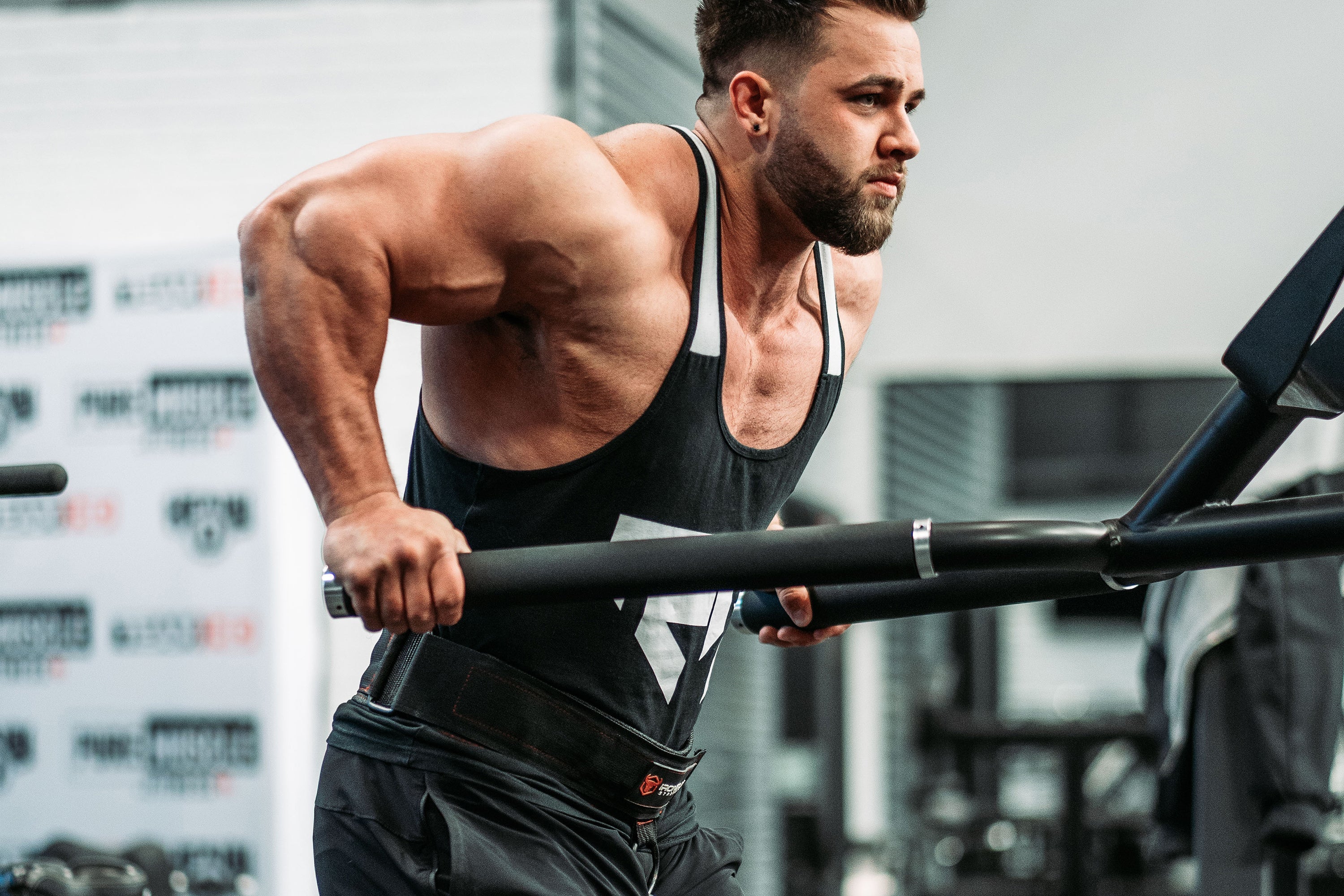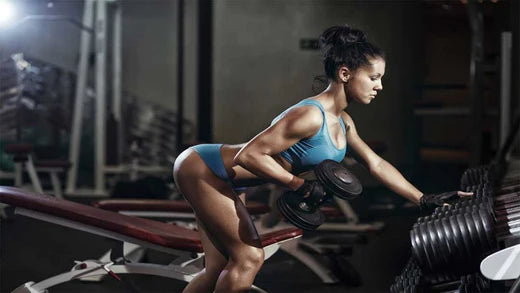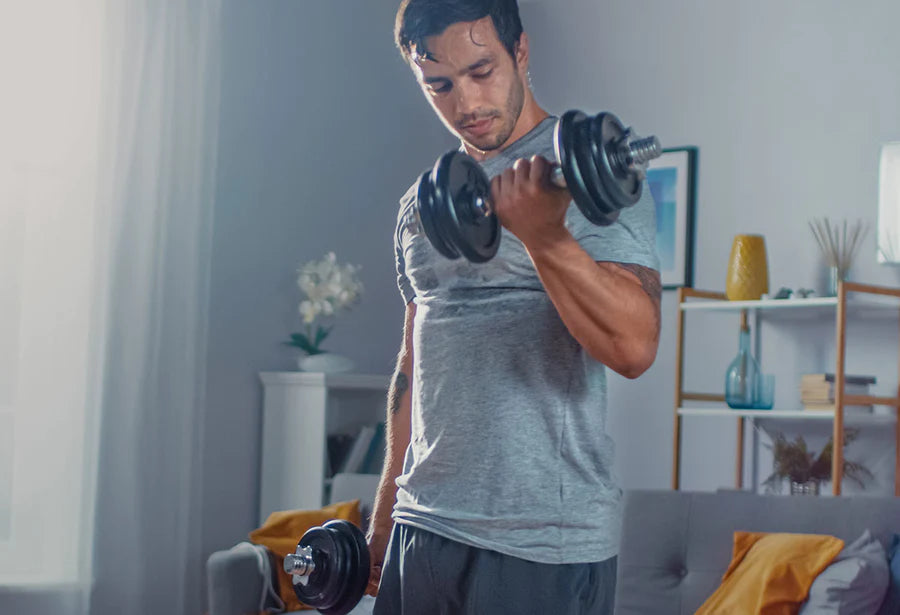5 Reasons You Should Be Doing Dips

The dip has been a go-to exercise since bodybuilding became popular. It's simple in form and doesn't require any specialized equipment. Best of all, it is one of the most effective exercises you can do for building upper body mass and strength.
Let's take a look at what a dip is, how to perform a dip, and five reasons why any serious lifter should include dips as part of their upper-body program. We'll also review some fitness equipment that can take your dips to the next level.
What is a dip?
The dip is an exercise that primarily targets your chest, but it also activates the shoulders, triceps, and abdominals.
Depending on how you angle your body during the exercise, you can increase the demand on the chest or the triceps. This means that one exercise can be an effective way to grow and strengthen two different body parts.
A chest-focused dip is performed on two parallel bars that are roughly just outside of shoulder width. A triceps-centered dip can also be performed on these bars, but it's more common to use two benches to elevate your feet and increase the resistance level.
HOW TO PERFORM A DIP
New to the dip exercise? Here's how to perform both a chest dip and triceps dip: To perform a chest dip, stand in front of two parallel bars, commonly known as the dip station or dip bars. Secure a firm grip on each of the bars. Tighten your core and breath out as you elevate yourself. Lean forward so that your chest is where all of the tension is being focused. Bend at the knees to elevate your feet a bit.
Now slowly lower yourself towards the ground, focusing on the contraction in the chest. Once your upper arms (triceps) reach parallel with the ground, pause and slowly push yourself back to the starting position. Do not lock out the elbows during the movement.
Triceps Dip
If you're using two parallel bars, you'll execute the same motion, but instead of leaning forward to emphasize the activation of the chest, you'll keep a straighter stance.
Naturally, your body will have a slight forward lean, but it won't be exaggerated like it is with a chest dip. By keeping the body upright, you'll move the focus to the triceps.
You can also perform a triceps dip by using two benches, chairs, or boxes. Place a bench parallel to another one, leaving enough room for your body in between. Sit on the first bench and raise your feet to rest on the second bench in front of you. Grab onto the edge of the bench you're sitting on with an overhand grip. Your hands will be close to your body.
Lift your body up using your triceps and move away slightly from the bench so that as you lower yourself, you're not dragging your back along the bench. Tighten the core and slowly lower your body between the two benches. When your arms are parallel with the ground, pause and return to the starting position.
BENEFITS OF DIPS
Now that you've got the motion down let's review the five reasons to add dips to your workout.
Boost your Bench Press
Back in my younger days, one of my biggest goals was to be able to bench press five "plates" on each side of an Olympic bar, or 495 pounds. I had eventually progressed to 455 but stalled at this weight and could seem to go no further.
Then I added weighted dips into my routine on a regular basis with the help of a dip belt. As I increased the poundage I could do in this movement, I also began to improve my bench press. When I could do a set of strict-form dips with three 45-pound plates hanging at my waist, I successfully hit 495 for a single repetition in the bench press. Dips can help you boost your bench.
Do you want to increase your bench press? Check out these simple tweaks you can make to start pushing more weight.
Pump Up Your Pecs and Triceps
By leaning the torso forward at about a 45-degree angle and letting the elbows flair out to the sides, the chest will be forced to perform the brunt of the work.
However, if you remain upright and keep the elbows tucked into your body, the triceps will get the more significant butt-kicking
Dips Are Great for High or Low Reps
Certain exercises work well as lower-repetition, power-type exercises, while others lend themselves to be better as high-repetition pumpers. I have found that dips can be used effectively in both ways.
Some days, you may want to start your chest or triceps routine with the weighted version of this movement and stick to the lower rep range – around 4 to 7.
On other occasions, finishing your workout with calisthenics or bodyweight dips is the perfect way to fill your tired muscles with blood and leave the gym with that final t-shirt-bursting pump.
Muscle Fiber Frying
Studies show that compound movements, or those exercises that activate the greatest number of muscle groups in one motion, are going to be better for building muscle and burning fat. Increased movement during an exercise will also increase the capacity for muscle fiber activation.
For example, a squat is always going to be superior to a leg extension because it activates several major muscle groups and takes your body through a complete range of motion. The leg extension activates one area and has a set path of limited movement.
Electromyographical analysis shows that dips are an excellent way to activate a range of muscle fibers, most notably in the pectorals (chest) and triceps muscles.3.5
No Gym, No Problem
Some of you reading this may not be able to get to a gym for numerous reasons, leaving you to do bodyweight training. And in these cases, dips are awesome, as all they require are two sturdy objects of the same height that are close enough to perform the movement properly.
- If you normally perform dips with additional weight, you can instead slow the movement down so that you are lowering your body over the course of four to six seconds, then taking two to three seconds to return to the starting position. This will make it feel like you are using a large amount of resistance. Now, get to dipping!










